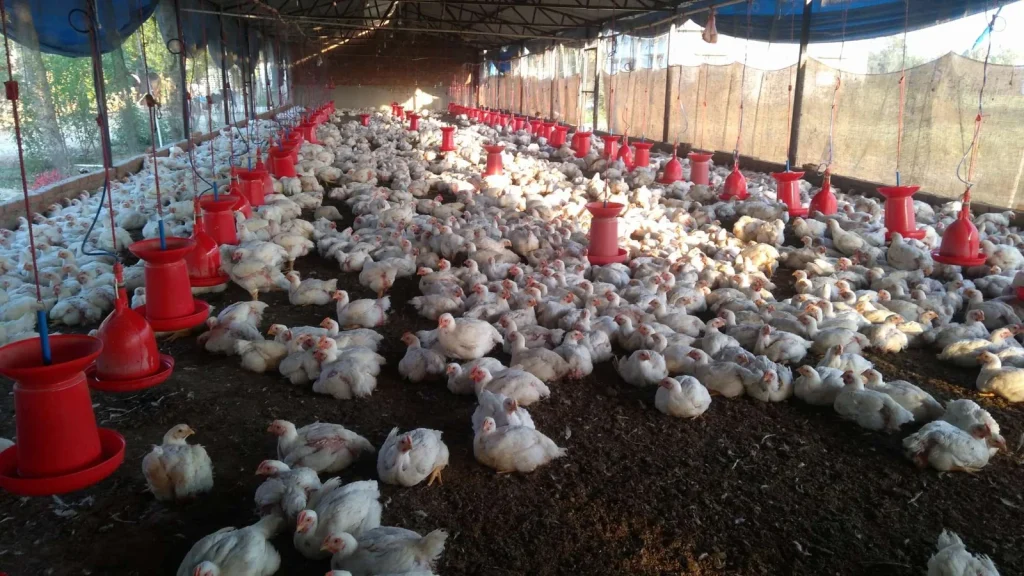The bird flu crisis in the United States is entering a worrying new phase as recent outbreaks in wild birds and the discovery of a new strain of avian flu are raising alarms across the country. These developments could worsen the already strained egg supply, threaten poultry farmers, and expose gaps in government disease monitoring. While there is no immediate threat of a pandemic, experts fear the situation may escalate into a more severe crisis.
Why it Matters
The increasing number of avian flu detections in wild birds has prompted concerns among public health experts and farmers. The U.S. Department of Agriculture (USDA) reported that 81 cases of highly pathogenic avian flu were detected across 24 states between December 29 and January 17. Wild birds can carry the virus without showing symptoms, making it easier for the virus to spread. This has led to the culling of thousands of wild geese and commercial poultry, including flocks in Pennsylvania and New York.
Farmers are also struggling as the flu spreads to domestic poultry. The outbreak has already affected more than 19 million birds, with 113 flocks reported as infected over the last month. This surge has significantly impacted poultry operations, especially those involved in egg production. With millions of birds culled, the egg shortage is only expected to get worse, further driving up prices for consumers.
The Growing Risk of H5N1
The bird flu virus, especially the H5N1 strain, continues to spread across the U.S. poultry industry. The virus is particularly concerning because it can mutate and spread more easily between animals, making it harder to control. While there are no widespread human infections yet, experts warn that the situation could worsen as more cases emerge.
Michael Osterholm, director of the Center for Infectious Disease Research and Policy at the University of Minnesota, noted that the virus has already devastated poultry operations, particularly those that handle ducks. He also warned that changes in migratory patterns, particularly in northern states where wild birds are staying for the winter, could exacerbate the issue.
“There’s a lot of H5N1 out there. And we’re going to see more cases in humans,” Osterholm said, although he emphasized that these would likely be isolated cases.
New Strain Raises Concerns
A new strain of the bird flu, called H5N9, has also been detected. This strain was found at a duck farm in California, which had previously dealt with an outbreak of the more common H5N1 strain. The emergence of H5N9 has sparked concerns that the virus could mutate and reassort with other flu strains, leading to new health risks for both animals and humans.
While H5N9 itself is not more dangerous to humans than H5N1, experts worry that the reassortment of flu strains could lead to a more easily transmissible virus. Richard Webby, director of the World Health Organization’s Collaborating Center for Studies on the Ecology of Influenza, explained that if avian flu mixes with seasonal human flu, it could result in a virus that spreads more easily among people.
“Such a mutation could result in a major public health problem,” Webby said.
Federal and State Responses
Despite the growing crisis, the federal government has faced criticism for its slow response. The Trump administration has paused much of the communications from health agencies, including the Centers for Disease Control and Prevention (CDC). The halt on public health reporting, particularly the CDC’s Morbidity and Mortality Weekly Report (MMWR), has created uncertainty regarding the status of the bird flu crisis and the government’s plans to address it.
In addition to the communication freeze, experts are concerned that the federal government’s response to the outbreak has been inadequate. The USDA has confirmed that 113 flocks have been affected by avian flu, but a concrete plan for controlling the virus has yet to emerge.
Meanwhile, health experts have expressed frustration over the lack of transparency. Anne Schuchat, former principal deputy director at the CDC, told KFF Health News that withholding vital scientific data for political reasons was unprecedented.
“I’ve never seen science delayed to this extent,” Schuchat said.
Economic and Social Impact
In addition to the ongoing poultry losses, the bird flu crisis is expected to have wider economic effects. The egg shortage caused by the culling of infected birds is putting a strain on consumers and retailers. Egg prices have already soared, and the continued spread of the virus will likely make the situation worse.
Farmers and poultry producers are also facing immense financial pressure. As wild birds spread the virus, more poultry farms are forced to shut down or cull their flocks, resulting in widespread economic losses. Local and state officials have emphasized the need for additional federal funding to support the recovery of affected industries.
Canton Mayor Zeb Smathers echoed these concerns, noting that “there’s no way to do it without the help of federal money” to address the financial toll on farmers and the broader economy.
Looking Ahead: What Needs to Be Done
Experts agree that addressing the bird flu crisis will require a coordinated effort at the federal, state, and local levels. This includes providing adequate funding to support farmers, ensuring timely communication about the outbreak, and implementing effective surveillance and control measures.
Government agencies, including the USDA and the CDC, will need to work together to monitor the spread of the virus, share data in a timely manner, and prepare for potential human infections. Additionally, research into vaccines and antiviral treatments will be crucial to reducing the risk of a larger outbreak.
As the bird flu crisis unfolds, experts are urging the federal government to prioritize public health and make decisions based on scientific evidence. “We need to get CDC back to full speed,” said Patrick Jackson, a UVA Health infectious diseases expert. “It’s essential to keep track of avian influenza.”
Conclusion
The U.S. is now facing a complex and rapidly evolving bird flu crisis, with new strains emerging and the virus spreading more widely across poultry farms. While there is no immediate threat of a pandemic, the economic impact on farmers and consumers is significant, and the lack of clear communication from federal agencies is causing frustration. The U.S. government must act swiftly to contain the outbreak and ensure that public health is prioritized as the crisis continues to unfold.
Disclaimer – Our editorial team has thoroughly fact-checked this article to ensure its accuracy and eliminate any potential misinformation. We are dedicated to upholding the highest standards of integrity in our content.





More Stories
Poultry Farms Struggling Amid Rising Bird Flu Cases
Poultry Farms Struggling Amid Rising Bird Flu Cases
Poultry Farms Struggling Amid Rising Bird Flu Cases